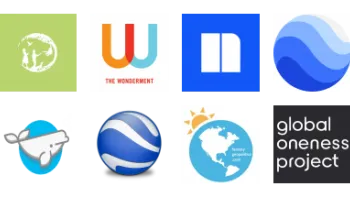Take a look inside 9 images
AllSides for Schools
Pros: Broad range of resources including lessons, a news site, and more. Teacher- and student-friendly.
Cons: Focus is on U.S. There are some bugs, and lesson navigation can get a little confusing given the many AllSides sites.
Bottom Line: This site meaningfully promotes dialogue rather than argument, and collects a lot of resources you might normally have to curate yourself.
AllSides for Schools is versatile. One the one hand, it could be one smaller part of a unit exploring a topic like media literacy, research, or bias. Teachers might pick a few of the activities or lessons to set a foundation in a classroom of self reflection and critical thinking. To this end, teachers might use the bias analyzing tools or use the Relationships First lesson in conjunction with one of the topic-based lessons. On the other hand, AllSide could be a larger part of an ongoing exploration of civics and current events. Students could work through all of the lessons and discussions, and keep up to date with current events through the Story of the Week activity. Along the way, students would deeply examine their own positions on issues, see where they agree/disagree with others, and try to understand what factors influence those beliefs.
From there, AllSides could easily be integrated into a unit on persuasive/argument writing and speaking. As students refine their positions on issues, they can use AllSides and other sources to do research and then discuss issues with students outside of the classroom through the Mismatch program. Take note that while the skills students will be learning and practicing are similar to those for debate, AllSides isn’t about winning an argument. Instead, it’s best suited to a unit on governance in which students use the concepts, skills, and content they learn to seek solutions to problems through collaboration and compromise.
AllSides for Schools is a website with classrooms resources to support the discussion of complex problems, contentious issues, and current events in middle and high school classrooms. AllSides provides teachers with lessons, activities, and even related sites, all aimed at helping students recognize bias (including their own), analyze news and media, and disagree with others while also seeking common ground. At the time of this review, there are close to two dozen lessons covering issues like gun control or broad concepts like free speech. Throughout these lessons, there's a clear belief in the need for people to speak and listen each other, and that there's no quick fix to making that happen.
Two starting points and supporting resources for the lessons are the Red Blue Dictionary, that seeks to explain key terms and concepts from a variety of political points of view, and the non-school version of AllSides, which presents news stories from three political perspectives (right, left, and center). Once classrooms are appropriately prepped for civil discourse there's the Mismatch platform, which connects students in classrooms across the United States to participate in small breakout discussions around structured prompts. The video conferencing platform matches small groups with differing viewpoints to have structured conversations with clear guidelines. Learning/teaching materials for students and teachers are on hand to maximize the likelihood of constructive dialogue around issues that may at first seem divisive.
It seems like we're increasingly confronted by complicated issues that require thoughtful, careful discussion. Being able to participate in those discussions, and work with others, from a variety of backgrounds and viewpoints, to design solutions to societal problems is an essential skill students will need. That discourse, however, can seem like an impossible goal for teachers who see just how polarized things have become. The great thing about AllSides for Schools is that the materials foreground the fact that meaningful change won't happen overnight. Instead, the materials push students to look inward first, and better understand their own perspectives. To this end, there's a handy set of tools designed to help individuals locate where they fall on the political spectrum, detect bias in the sources of information they rely on, and, perhaps most importantly, learn how to talk to and listen to others. As they master that then they can embark on a variety of topic-based lessons, or engage with students from other classrooms through Mismatch. All along the way, there's a healthy focus on discussion over debate.
In the course of our review, however, we did happen upon a few bugs. There's also some pending content, most importantly the lesson on race. Given AllSides spreads across at least three different sites or experiences, it can be a bit disorienting. It'd be good to see the user experience more streamlined in the future. And, of course, any measurement of "bias" -- especially on a red to blue spectrum -- is subjective, and students should be encouraged to think critically about -- and beyond -- AllSides' ratings. That said, for teachers who want to explore current events, controversial issues, and social justice, AllSides for Schools can be a great springboard for meaningful, rigorous learning. It collects a set of tools you'd normally need to find and link to yourself.

















